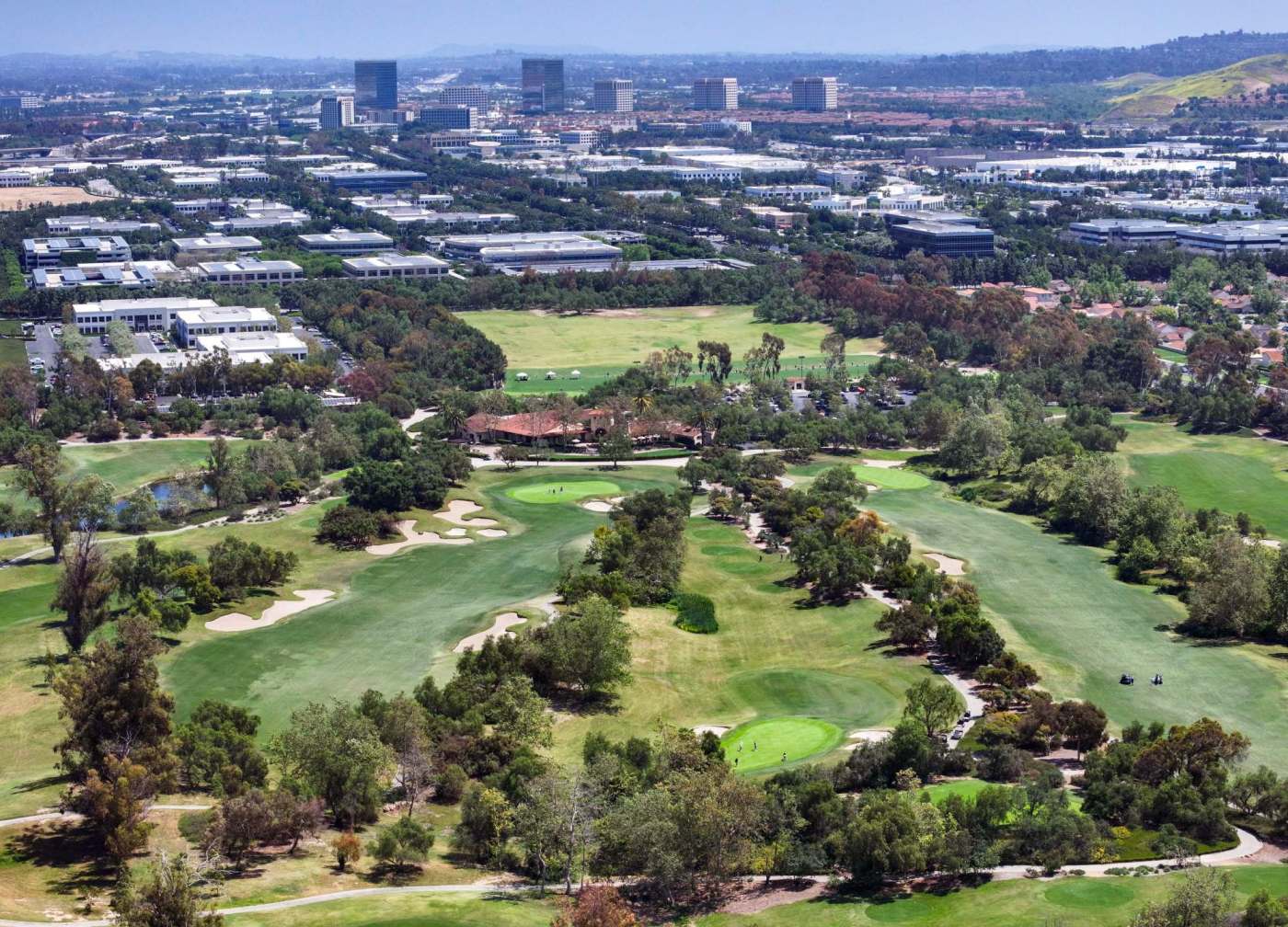Irvine voters will almost certainly have a say in whether to replace the Oak Creek Golf Club with a residential community of 1,500 single-family houses and 1,600 apartment units, which is what the Irvine Company proposes to do.
That’s because the land, although privately owned by the Irvine Company, was designated as permanent open space in a 1988 conservation initiative backed by Irvine voters.
For the development proposal to move forward, city officials disagree on whether voters must approve an amendment to the open space plan or if the City Council can change the plan on its own.
Putting the legal argument aside, however, councilmembers informally agreed recently that bringing the matter to a citywide vote is their preferred course of action.
The seven-member City Council could vote on ballot language later this month.
The ballot measure would likely go in front of voters in November.
Irvine’s 1988 initiative was intended to help the city, over time, to accrue large, contiguous swathes of open space in exchange for permitting development opportunities elsewhere.
To facilitate its proposed development on the golf course, the Irvine Company has offered to transfer ownership of 315 acres of open space in northern Irvine to the city and also concede operational control of an additional 565 acres of orchards currently owned by the city, but on which the company maintains agricultural operations. The developer would also build a school in the new neighborhood.
Despite the addition of public open space, the company’s proposal requires an amendment to the city’s open space plan because the golf course is explicitly protected in it.
It’s the first time since the passage of the law 37 years ago that Irvine officials have considered a development on land designated as permanent open space.
The proposed amendment reflects changing times for a master-planned city that has expanded to the edges of its original 20th-century blueprint.
“Frankly, it’s a terrific open space agreement that has stood the test of time and has proven to be extremely valuable to the quality of life and community,” Irvine Mayor Larry Agran said in a recent interview. In 1988, he was a councilmember who supported the initiative.
“While we’ve adhered to the master planning process and to the fundamentals of the master plan, it gets tougher and tougher as you go along,” Agran added. “This development, even though it’s large, is kind of in the nature of what we sometimes refer to as infill.”
Infill is the process of making urban spaces denser instead of building outward.
For decades, Irvine had to deal with infill only rarely, as the city built toward its limits, one neighborhood at a time, according to the city’s master plan.
Since the 1970s, the Irvine Company alone has built 22 residential villages.
Its neighborhoods stretch to the peripheries of the 66-square-mile city and push into the foothills of the Santa Ana mountains.
Now, the city has more than 315,000 residents and hardly any space left to grow outward.
Infill is the city’s challenging new reality, especially as elected officials walk a tightrope between respecting the original designs of the master plan and meeting ambitious state housing mandates.
They’re also juggling those goals with a promise to keep about 16,000 acres of parks, trails and wilderness areas — an area greater than one-third of the entire city — as “forever protected.”
“We adopted (the initiative) as a ballot measure with the understanding that it would make that open space locked away forever free of development,” Agran said.
“Certainly, as a matter of honest dealing with the public, it was made clear that nobody was interested in having the council tamper on its own with the open space agreement,” he added.
Since the Irvine Company announced its intentions to develop the golf course at a City Council meeting in May, hundreds of residents have submitted written comments to the city in opposition to the plan.
Hence, councilmembers want the matter to come to a citywide vote.
So far, the council has only voted to begin analyses and technical studies of the Irvine Company’s proposal.
Those studies will take almost a year to finish and will happen concurrently as voters go to the polls.
Only then, and should the amendment pass, will the City Council weigh the merits of the Irvine Company’s proposal.
An Irvine Company spokesperson said it’s premature for the company to comment on the prospective ballot measure, but it welcomes the city’s holistic review process.
In the meantime, Agran says the city must complete its due diligence.
“I think what has been submitted is a coherent, reasonable development,” he said. “We’ll have to await the analyses to see how much adversity this brings in terms of traffic and other adverse effects, whether those could be mitigated, and whether, on balance, it makes sense to go ahead.”
